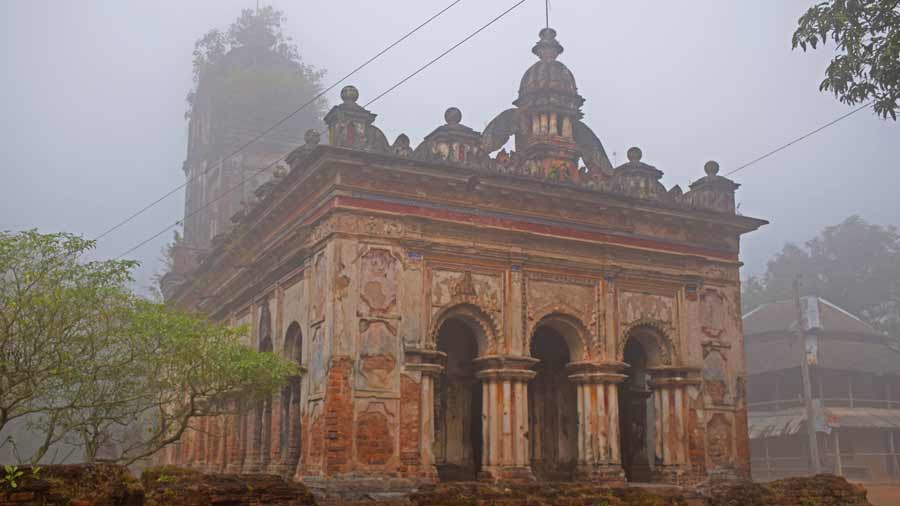If a tourist plans a road trip near Contai, it need not be only for a seaside holiday. This trip does not involve any beach-hopping. Contai is around 126 km from Kolkata and the destinations to be covered are located within a distance of 40 km from the town. Once, the area was a part of Odisha and the structural heritage of the area has a distinct influence of Odishi architecture.
Originally a part of Hijli Kingdom (1687 to 1886), Contai probably first found a place in India’s map as ‘Kendua’, which was included in the book Jungle Life In India – Journeys and Journals of an Indian Geologist, written by Valentine Ball of the Geological Survey of India in 1880. Contai’s rise to fame came after it became headquarters for salt production in 1788, when a salt factory locally known as ‘Nimak Mahal’ was built here. At present, the factory lies unattended and dilapidated besides the Contai Sub Divisional Court.
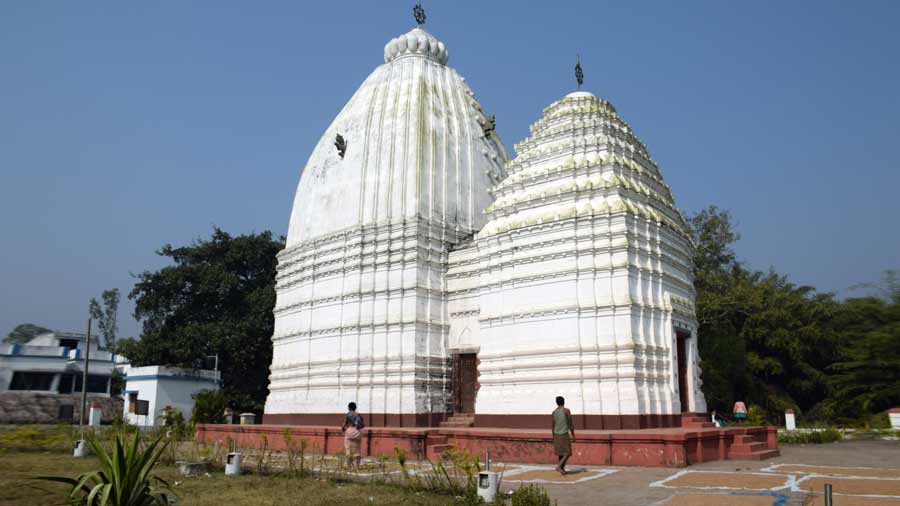
The Bahiri Jagannath temple, designed in Odishi style Amitabha Gupta
While driving from Kolkata to Contai, a detour to the left from Marishda Bazar (9 km ahead of Contai) for 4 km takes the traveler to the ancient settlement of Bahiri, alias Deulbarh. The prime attraction of the place is the late-16th century Bahiri Jagannath temple designed in Odishi style.
The Deul temple is approximately 60-feet high with a Jagamohan (assembly hall) 40-feet high. The temple has been renovated by the State Archaeology department. The temple has four jumping lion statues on its four walls. A foundation stone, written in Odia, says that the village and the temple were gifted by one Bibhisan Das to his Guru Gadadhar to please the deities of the temple in 1584. At present, the deities of this temple are located at the nearby ‘Jagannath Bati’.
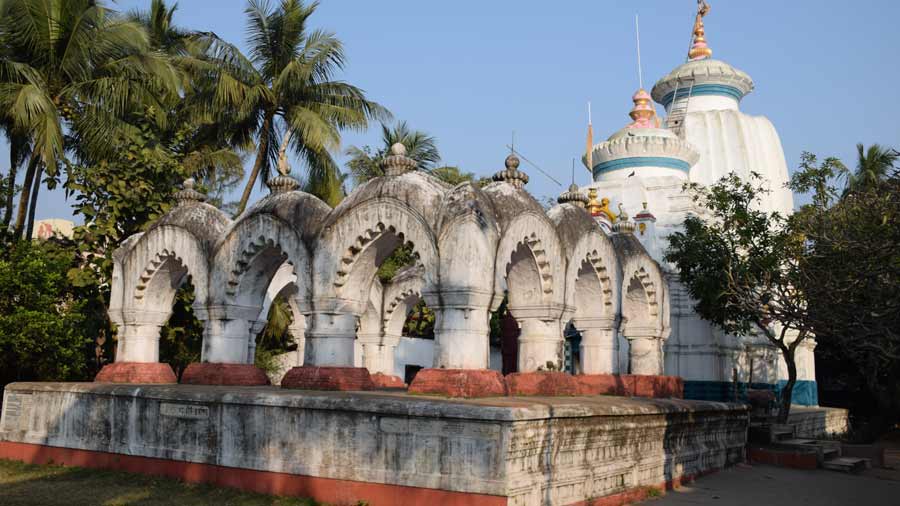
The Hattanagar Shiva Temple of Egra was constructed during the reign of Mukunda Dev — the last Hindu king of this area Amitabha Gupta
From Marishda Bazar, instead of entering Contai, one has to take the bypass road and drive around 26 km northwest to reach Egra. The Hattanagar Shiva Temple of Egra was constructed during the reign of Mukunda Dev — the last Hindu king of this area. Built in Odishi style, the 50-feet high Saptarath Deul with a 27-feet Jagamohan has a unique open hall with 12 doors in its front, known as Baroduari.
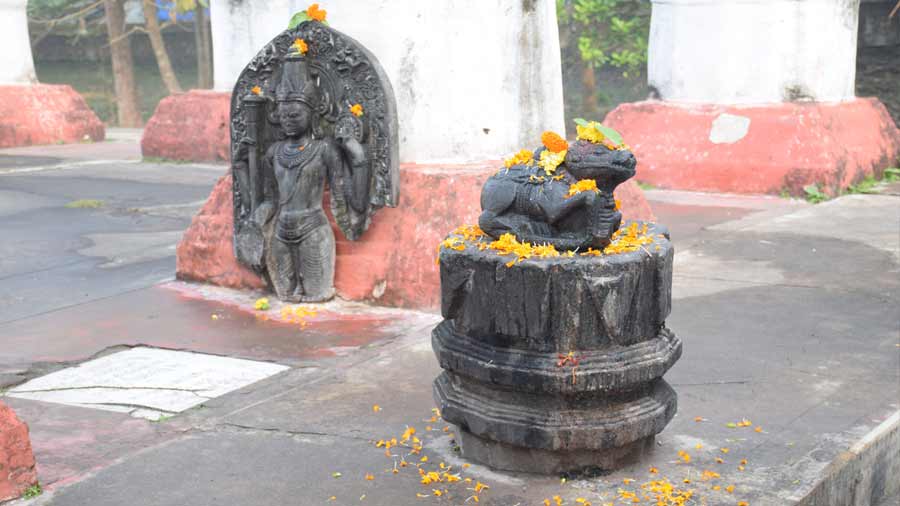
There are several black stone statues of different deities kept inside the temple Amitabha Gupta
Local legends say the temple was constructed during the reign of Odisha king Mukunda Dev (1560-68) by local landlord Divya Singha Mahapatra. The Swambhu Shivalingam is buried deep inside a subterranean chasm filled with water. There are several black stone statues of different deities kept inside the temple.
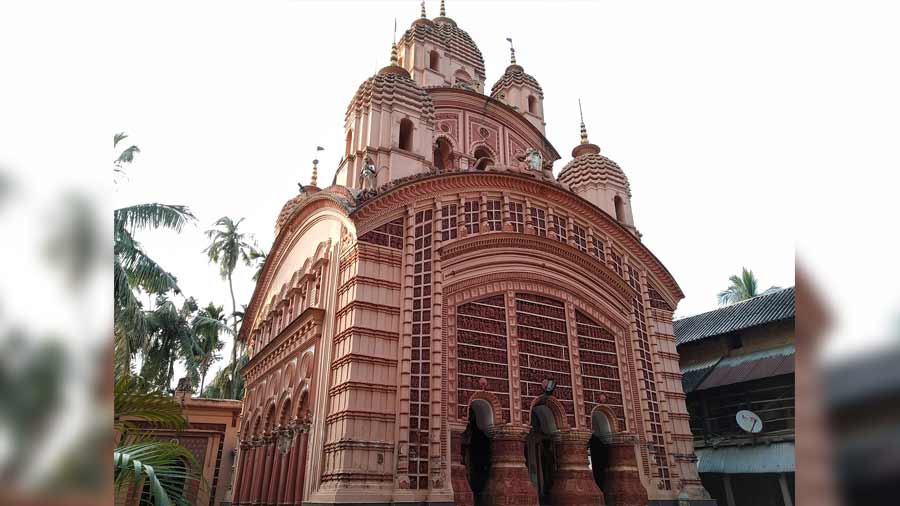
The 1810-built, nine-pinnacled and approximately 40-feet high temple of Raghunatha at Alanggiri Amitabha Gupta
From Hattanagar, a drive of 12 km southwards brings the traveler to Alanggiri. The 1810-built, nine-pinnacled and approximately 40-feet high temple of Raghunatha, constructed by local Das family, has exquisite terracotta work on its wall. Various scenes from Krishnalila, Ramayana, Mangal Kavyas (Bengali Hindu religious texts) and social scenarios can be seen there. There is also a beautiful Rasmancha outside the temple premises. The other interesting temple of Alanggiri is Radha Gokulananda Jiu’s Ekratna temple built by the local Kar Mahapatra family in the mid-18th century.
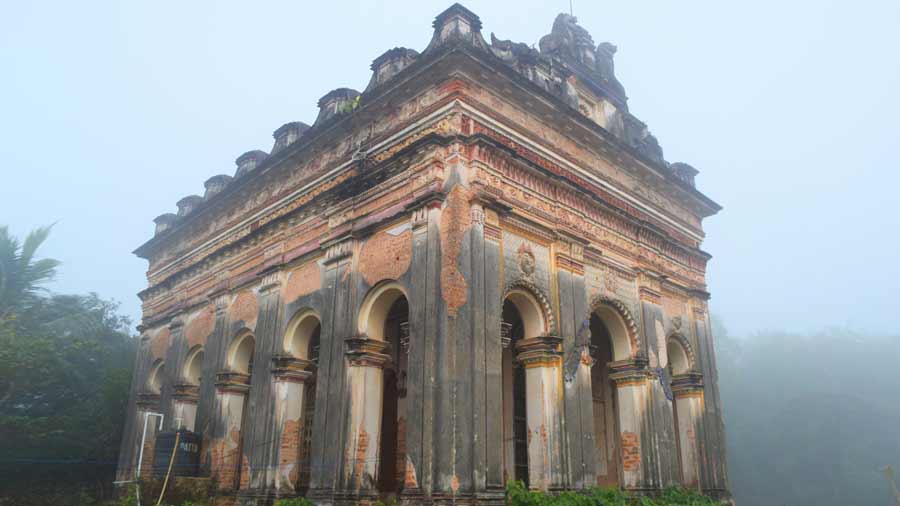
The flat-roofed Shadabhuja Gouranga temple at Panchrol Bazar Amitabha Gupta
From Alanggiri, a drive 5 km south takes the visitor to Panchrol Bazar. A walk through the narrow lanes of the village for about 800 metres south brings the visitor to the flat-roofed Shadabhuja Gouranga temple. The temple adorns both stucco and terracotta work. Just 100 metres from Shadabhuja Gouranga is another temple whose architecture is one of a kind.
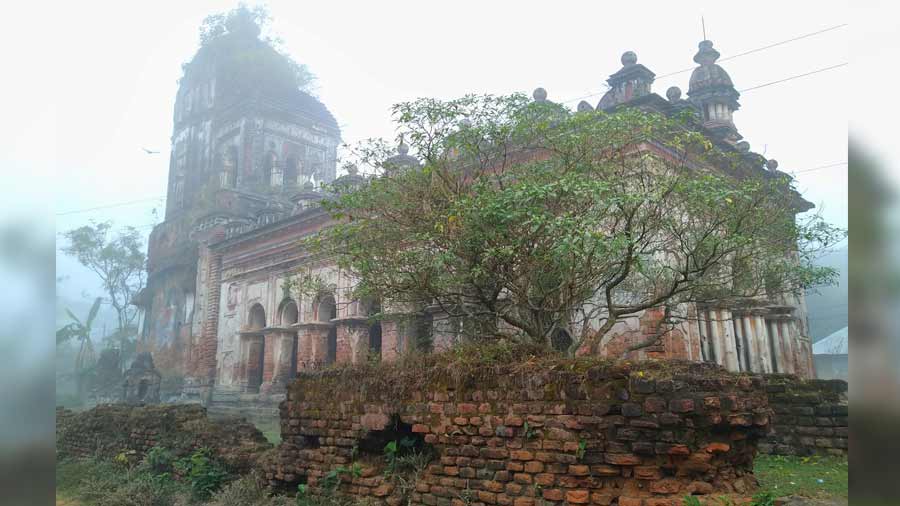
The Radha Binod temple’s architecture is one of a kind Amitabha Gupta
The Radha Binod temple is a mid-19th century, 40-feet-high Shikhar Deul temple standing on a flat-roofed structure. Though it does not have terracotta panels, its stucco work is worth taking a look at. At the entrance of the temple on the rooftop is a brick Garura statue. The Shikhar Deul also has several stucco figurines on its wall. There is also another flat-roofed temple of Madanmohan adjacent to this temple, which has been partly, but poorly, renovated.
How to Reach:
- By Road: Drive to Contai via Uluberia, Bagnan, Kolaghat, Nandakumar, Bajkul, Henria and Nachinda. Marishda Bazar is just 2.5 km from Nachinda. Bahiri is 4 km from Marishda. One has to take the bypass road to reach Egra. Hattanagar, Alanggiri and Panchrol are inside the jurisdiction of Egra Police Station.
- By Train: Howrah-Digha Special leaves Howrah Station at 6.50am and reaches Contai at 9.25am. Taking a hired vehicle from Contai Station can allow visitors to reach all these destinations. For photographers, it is advisable to reach Hattanagar at the end as the temple faces west.
- Where to Eat: Breakfast can be had at Kolaghat. For lunch, Restaurant Nikita at Contai is a good option.
Amitabha Gupta is a travel writer and a photographer who specializes in heritage and history of West Bengal. His work has been featured in many magazines and newspapers — both online and offline. He also conducts heritage walks and tours in and around Kolkata.
